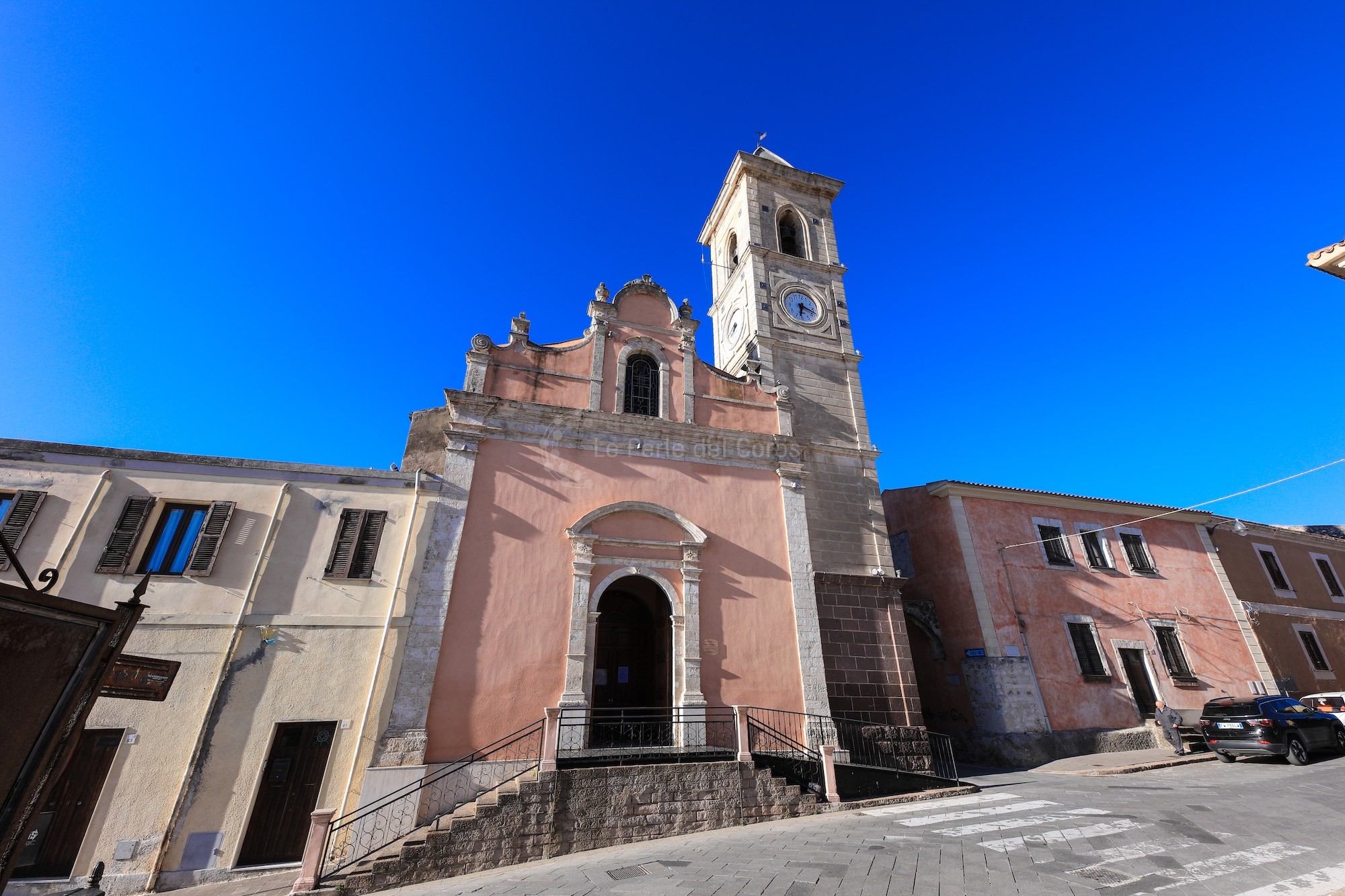
Usini
Church of the Nativity of the Blessed Virgin Mary
To better understand the history and construction of this church, the church of Saint Peter must be mentioned first, demolished in order to build the church of the Nativity of the Blessed Virgin Mary. The church of Saint Peter is listed in the condaghi of Saint Peter in Silki and Saint Nicholas of Trullas, owing to the donations of land made in the 12th century (tn* a condaghe is a register of the Church’s belongings in Medieval Sardinia). In 1953 the church received a pastoral visit from the Archbishop Alepus and in 1555 the apostolic commission arrived, guided by Don Giovanni Pilo, delegated by Monsignor Alepus. On that occasion an inventory of the sacred objects was written, among which was the silver tabernacle of the Holy Sacrament and the book of the Baptised. Apparently, it was an ecclesiastic complex with two oratories: the Holy Cross and the Holy Rosary, maybe adjoining the church, which was used by the two confraternities. Few references have been made to the church of Saint Peter in historical documents, and traces of its remains haven’t been found. The date of its construction remains unknown, it might have been contemporary to the old church of S’Ena Frisca. Today the Church of the Nativity of the Blessed Virgin Mary, built in 1824, is located in the centre of the old town. Its main entrance is in via Roma, in front of the square “Piazza Conciliazione”, but its entire length extends behind, in via Volta. The structure is in Late Baroque style and was built by Sardinian workers from the central and northern areas of the island. The façade, divided into two parts has a lower part bordered at the corners by half pilasters and finished by a protruding gable. In the centre, the main entrance is also framed by half pilasters, surmounted by a curvilinear pediment. In the middle of the upper part there is an arched window. The building, with a single nave, has an apse with dome that covers the presbytery, plus six lateral chapels. The main altar leans against the apse wall, made of stone and finished with stuccoes, with a niche in the middle displaying the statue of Holy Mary of S’Ena Frisca. Among the furnishings inside, the two twin altars of Our Lady of Mount Carmel and of Saint Anastasia are quite interesting. These were made by the Diana and Calvia brothers, artists from northern Sardinia, between the 18th and 19th centuries. The first altar was donated to the church of the Nativity in 1857, it has a Classical architectural style, subsequent to the Baroque one. Also, the marble water stoup is of considerable value: it has an inscription from 1599 written by the parson Matheus Vargius. The pavement of the church is in slate bricks. The construction of the bell tower, originally planned to stand on the left of the church, was interrupted due to lack of stone. It was finally completed in 1900 on the right of the façade.
Source: “Usini, Un paese Una parrocchia Una pievania dal XIII al XX secolo” (Usini, a Town, a Parish, a Parsonage, from the 13th to the 20th century”, in Italian), by Antonio Bazzoni, “Saint Peter in Usini, the secrets of the lost church” (in Italian), by Roberto Onnis, Poligrafix
Source: http://www.sistemacorosfigulinas.it/index.php/territorio-e-cultura/usini/97-comune-di-usini-localita-paesaggistiche




